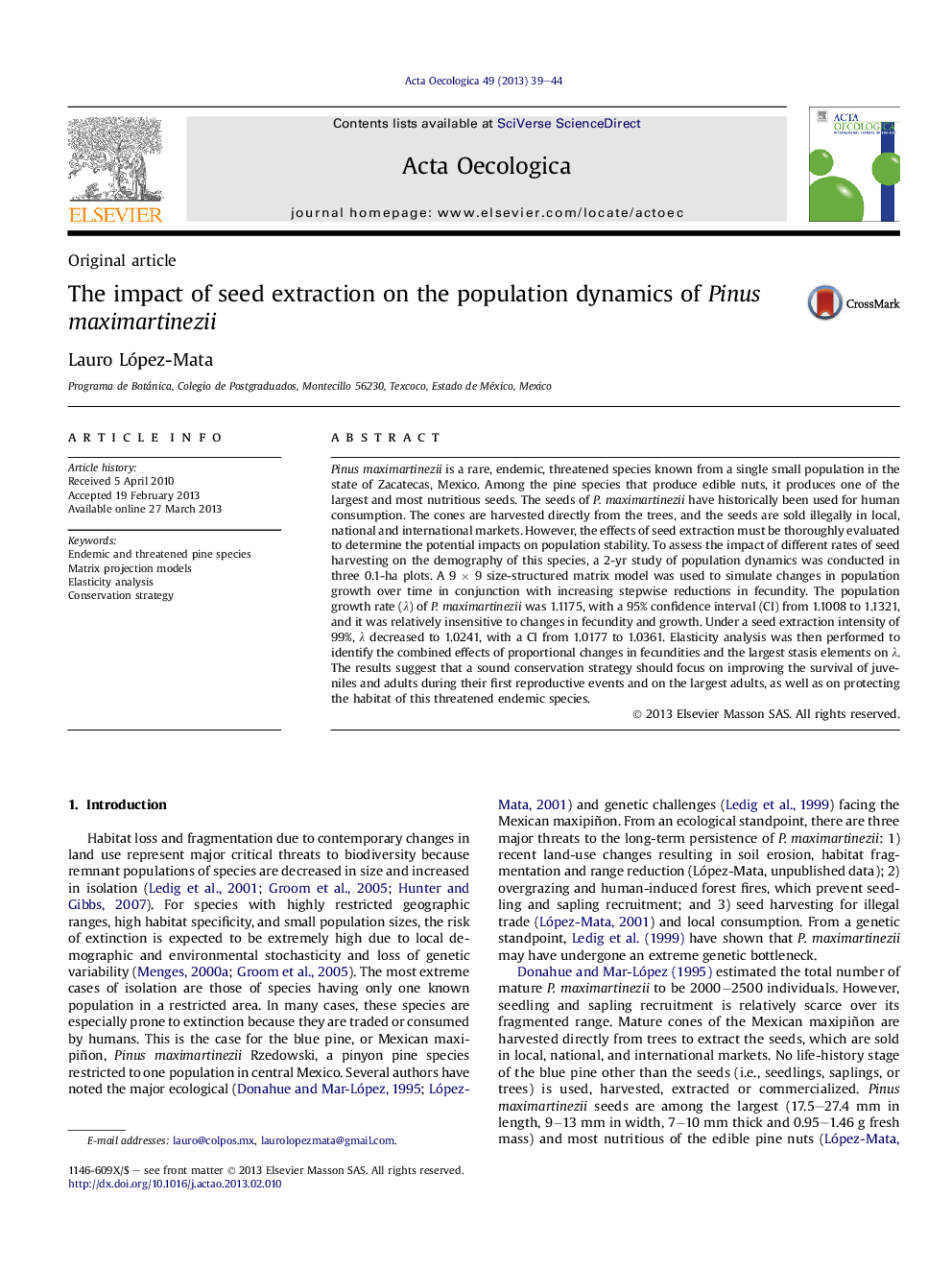| Article ID | Journal | Published Year | Pages | File Type |
|---|---|---|---|---|
| 6297371 | Acta Oecologica | 2013 | 6 Pages |
Abstract
Pinus maximartinezii is a rare, endemic, threatened species known from a single small population in the state of Zacatecas, Mexico. Among the pine species that produce edible nuts, it produces one of the largest and most nutritious seeds. The seeds of P. maximartinezii have historically been used for human consumption. The cones are harvested directly from the trees, and the seeds are sold illegally in local, national and international markets. However, the effects of seed extraction must be thoroughly evaluated to determine the potential impacts on population stability. To assess the impact of different rates of seed harvesting on the demography of this species, a 2-yr study of population dynamics was conducted in three 0.1-ha plots. A 9 Ã 9 size-structured matrix model was used to simulate changes in population growth over time in conjunction with increasing stepwise reductions in fecundity. The population growth rate (λ) of P. maximartinezii was 1.1175, with a 95% confidence interval (CI) from 1.1008 to 1.1321, and it was relatively insensitive to changes in fecundity and growth. Under a seed extraction intensity of 99%, λ decreased to 1.0241, with a CI from 1.0177 to 1.0361. Elasticity analysis was then performed to identify the combined effects of proportional changes in fecundities and the largest stasis elements on λ. The results suggest that a sound conservation strategy should focus on improving the survival of juveniles and adults during their first reproductive events and on the largest adults, as well as on protecting the habitat of this threatened endemic species.
Related Topics
Life Sciences
Agricultural and Biological Sciences
Ecology, Evolution, Behavior and Systematics
Authors
Lauro López-Mata,
